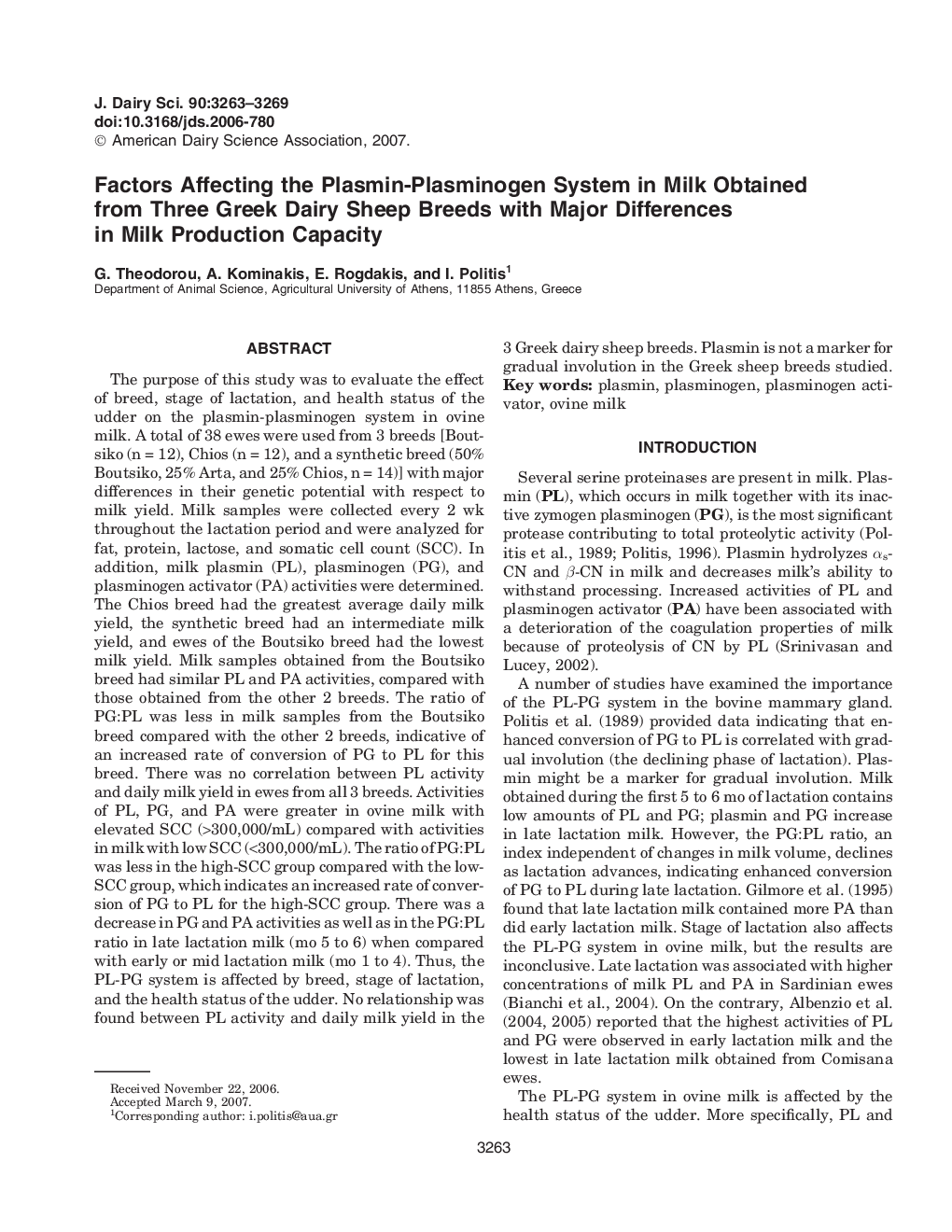| Article ID | Journal | Published Year | Pages | File Type |
|---|---|---|---|---|
| 2440790 | Journal of Dairy Science | 2007 | 7 Pages |
Abstract
The purpose of this study was to evaluate the effect of breed, stage of lactation, and health status of the udder on the plasmin-plasminogen system in ovine milk. A total of 38 ewes were used from 3 breeds [Boutsiko (n = 12), Chios (n = 12), and a synthetic breed (50% Boutsiko, 25% Arta, and 25% Chios, n = 14)] with major differences in their genetic potential with respect to milk yield. Milk samples were collected every 2 wk throughout the lactation period and were analyzed for fat, protein, lactose, and somatic cell count (SCC). In addition, milk plasmin (PL), plasminogen (PG), and plasminogen activator (PA) activities were determined. The Chios breed had the greatest average daily milk yield, the synthetic breed had an intermediate milk yield, and ewes of the Boutsiko breed had the lowest milk yield. Milk samples obtained from the Boutsiko breed had similar PL and PA activities, compared with those obtained from the other 2 breeds. The ratio of PG:PL was less in milk samples from the Boutsiko breed compared with the other 2 breeds, indicative of an increased rate of conversion of PG to PL for this breed. There was no correlation between PL activity and daily milk yield in ewes from all 3 breeds. Activities of PL, PG, and PA were greater in ovine milk with elevated SCC (>300,000/mL) compared with activities in milk with low SCC (<300,000/mL). The ratio of PG:PL was less in the high-SCC group compared with the low-SCC group, which indicates an increased rate of conversion of PG to PL for the high-SCC group. There was a decrease in PG and PA activities as well as in the PG:PL ratio in late lactation milk (mo 5 to 6) when compared with early or mid lactation milk (mo 1 to 4). Thus, the PL-PG system is affected by breed, stage of lactation, and the health status of the udder. No relationship was found between PL activity and daily milk yield in the 3 Greek dairy sheep breeds. Plasmin is not a marker for gradual involution in the Greek sheep breeds studied.
Related Topics
Life Sciences
Agricultural and Biological Sciences
Animal Science and Zoology
Authors
G. Theodorou, A. Kominakis, E. Rogdakis, I. Politis,
